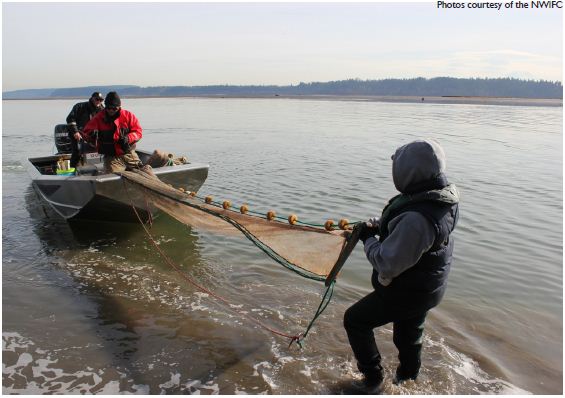Johns Creek FundingBy NW Indian Fisheries Commission
"This money is the first step towards getting to the bottom of how much water really is available for people and fish in Johns Creek," said Andy Whitener, the tribe's natural resources director. "This amount of funding probably won't be enough for all the needed research, so hopefully more funding is available in the future." It is possible for the state's study of Johns Creek to connect with tribal research on neighboring Goldsborough Creek. "If this is done the right way, we can have a complete picture of how water flows between two important watersheds," said John Konovsky, environmental program manager for the tribe. Thurston County Superior Court ruled last year in favor of the tribe in a lawsuit asking the state to impose a moratorium on drilling new wells in the Johns Creek watershed until the state determines if water is legally available. The tribe had earlier petitioned the state Department of Ecology to stop new water withdrawals in the Johns Creek Basin until enough scientific information is available. The state rejected both requests, citing budget constraints. "Each year, more wells are drilled in the watershed, but no one could say what impact those wells are having on fish," Konovsky said. Winter rainfall seeps into the ground, providing summer streamflow for Johns Creek. But because wells draw water from the same supply, there is less water available to maintain streamflows. Johns Creek is home to a small and fragile population of summer chum that is being harmed by increasingly low water levels. "If we could achieve the state-mandated minimum levels, we would have 20 percent more spawning habitat in Johns Creek," Konovsky said. "We've seen lower flows each year in Johns since the 1950's when records were first taken," Konovsky said. "In every one of those years, more wells have been drilled in the basin. Not only are minimum flows set in 1984 not being met, but every year since then the water shortage has gotten worse." Since the minimum stream flows were established nearly 30 years ago, (WAC 173-514), more than 200 "permit-exempt" wells have been drilled in the Johns Creek basin. State law allows these wells to be drilled without first obtaining a permit, and allows withdrawals of up to 5,000 gallons a day. "The long term health of Johns Creek depends on us being able to understand how much water there really is," Whitener said. "Our treaty rights to harvest fish depend on fish being able to use streams like Johns Creek. Fish need water for that to happen."
Back to Home page. |

 A hydrology study of the Johns Creek basin is the next step in an effort by the Squaxin Island Tribe to protect the valuable watershed outside Shelton. The recently approved state supplemental budget includes partial funding of $126,000 for the state Department of Ecology to conduct the study.
A hydrology study of the Johns Creek basin is the next step in an effort by the Squaxin Island Tribe to protect the valuable watershed outside Shelton. The recently approved state supplemental budget includes partial funding of $126,000 for the state Department of Ecology to conduct the study.